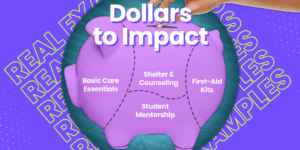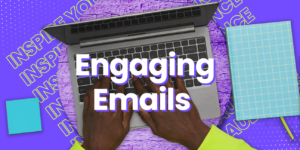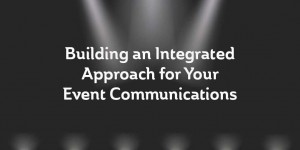As you know, the fundraising landscape is always evolving. And there have never been more questions around nonprofit events. But whether you’re hosting a traditional fundraiser or something more innovative, you will need to follow up with effective post-event messages.
When it comes to events, we often focus on creating a strategy for connecting with attendees beforehand.
This is a key step too many nonprofits don’t think about enough!
You can’t stop your outreach just because your attendees are heading home or logging off, after all. Your event will be fresh in their minds for a few days. So, take advantage of the opportunity to continue building relationships with attendees.
If you want to retain your event attendees as donors, encourage participation in future events, and exceed your fundraising goals, you need to keep your audience engaged with relevant communications.
So, refamiliarize yourself with your event’s brand and consider using the following strategies in your post-event messages.
Always start with a “thank you.”
This one should be a no-brainer. Hopefully, you at least send a thank you email to follow up with attendees, even if you don’t have an extensive strategy for your post-event messages.
But what exactly should go into this email?
You want to get this email out quickly after the event. So, you may not have your fundraising totals finalized. That’s OK! You can try to wait a day or two. Or just provide your audience with an estimate for now.
“Thank you for attending our gala and helping us raise over $1 million.”
The idea is to let your audience know the event was a success. Then get back to them with the official total later.
This initial thank you is a great place to be personal with your audience. Why send everyone the same photo? Use variable content so each recipient receives something special, like a picture of themself at the big event!
You can show your supporters you’re paying attention by segmenting your post-event follow-up.
Use different messages for those who attended the event and those who did not. Send a short message to those who registered but did not attend with some information about the event. Let them know they can still support your organization and help advance your mission.
LEARN MORE: Does your nonprofit need to send better thank you’s?

We hit our goal!
However, you should let your supporters know exactly how much you raised once you’ve calculated the official total. Share the good news if you surpassed your goal. And be sure to thank attendees for helping you exceed expectations.
But if you came up short, use this opportunity to ask your donor base for a little more support!
And don’t forget to go surround sound with your post-event messages.
Why settle for a single follow-up email with details about your fundraising totals and attendance? Your donors are expecting more.
So, post the good news on your social media channels. Mail personal, handwritten thank you notes to your largest donors and sponsors. Send a text to follow up with anyone who participated in your event’s text-based giving initiative.
It’s all about finding ways to let your audience know how their support at your recent event is helping make the world a better place.
LEARN MORE: Are you going surround sound effectively?

What did they really think?
You won’t know if you don’t ask!
This information is invaluable!
Not only will you gain insight into what you can do to make your next event even better. But you will also end up learning a lot about your attendees.
Any information you can gather about a supporter’s preferences can be used to be more personal and accommodating in the future. So be sure to ask questions about your event outreach in addition to questions about the event itself!
LEARN MORE: Why aren’t you using donor surveys?

Relive the experience.
If you have a lot of great photos from your event, consider creating an online gallery and sending a link to attendees. Or if you have video of a speech from the guest of honor, share it online with a #ICYMI (In Case You Missed It) caption.
These can include any stories you collected while talking with attendees. Their testimonials can be especially powerful if you recite the details of why someone attended the event or what moved them to support your organization initially.
You can document these stories in the form of blog posts, share them directly in your organization’s newsletter, or add them to the digital version of your sponsorship journal!
LEARN MORE: The four principles of visual storytelling.
Spread the news.
Providing an overall recap of your event is never a bad idea. For many organizations, this comes in the form of a blog post or a press release.
Providing an overview of your event, the cause you supported, the attendees who were honored, the total amount of dollars raised, and how exactly that money will further your mission gives you another opportunity to have a conversation with your audience.
However, press releases and blog posts read very differently from one another. Typically, a press release should feel more like a news story. A blog post has a more casual and conversational tone.
So, use whichever better reflects your organization, mission, and established event brand.
Despite the differences in language and feel, blog posts and press releases have many of the same benefits in your post-event messages. For example, you can embed several pictures into the body of the piece and include hyperlinks within the text.
Don’t forget to reach out to your attendees and let them know when your event recap is published.
And consider sending your press release directly to local media outlets, especially if your event achieved something great for your community!
LEARN MORE: Enhancing the experience with effective event branding.
Evolve and adapt.
Successful event communications will reach the right audience in the right way at the right time. And you need to share the right message, the one backed by your event’s strategic brand.
So, plan your communications in advance. Be sure to segment your audience so they receive pre- and post-event messages that feel relevant to them. And don’t be afraid to adjust your strategy on the fly.
If an important donor hasn’t opened your emails, send them something in the mail. Or better yet, pick up the phone and give them a call.
As you know, the fundraising landscape is always evolving. So, it’s important to think of ways your organization can adapt and think more holistically about how you follow up with attendees.
Want to talk through your post-event outreach with us? Click here!









